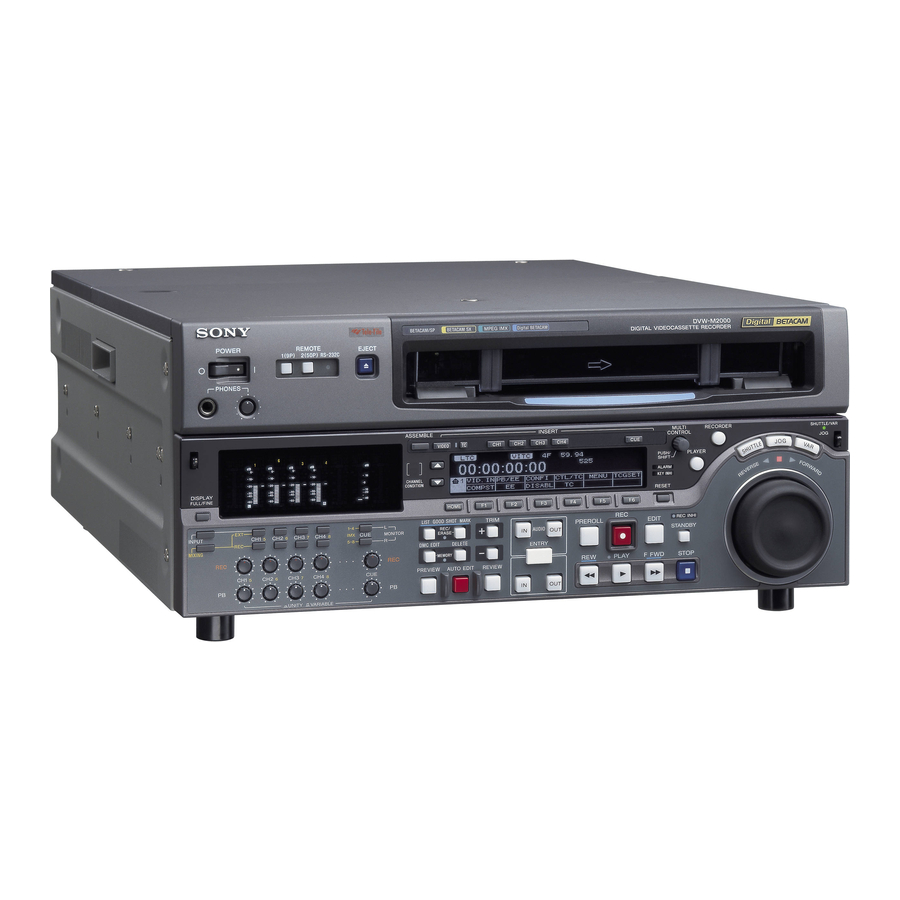Table of Contents
Advertisement
Quick Links
DIGITAL VIDEOCASSETTE RECORDER
DVW-M2000
DVW-M2000P
DVW-2000
DVW-2000P
Note
The supplied CD-ROM includes operation manuals for the DVW-2000 series of
digital videocassette recorders (English, Japanese, French and German versions).
For more details, see page 1-5 "Using the CD-ROM Manual."
TM
OPERATION MANUAL
[English]
1st Edition (Revised 2)
Advertisement
Table of Contents














Need help?
Do you have a question about the SONY DVW-2000P and is the answer not in the manual?
Questions and answers
Replace the nv ram battery
The provided context does not contain instructions on replacing the NV RAM battery in a Sony DVW-2000P.
This answer is automatically generated
I just sent a question but didn’t finish it so just clarifying… I have a DVW-M 2000 digital video cassette recorder digital Betacam that is showing an error – 96 code can you tell me what it means and how I can fix it please thank you
Error code 96 on the Sony DVW-2000P digital videocassette recorder appears after switching specific settings in the MSW-2000. It can be resolved by turning the power off and then on again.
This answer is automatically generated
I have an ERR-96 on my DVW-M2000 Digital videocassette recorder